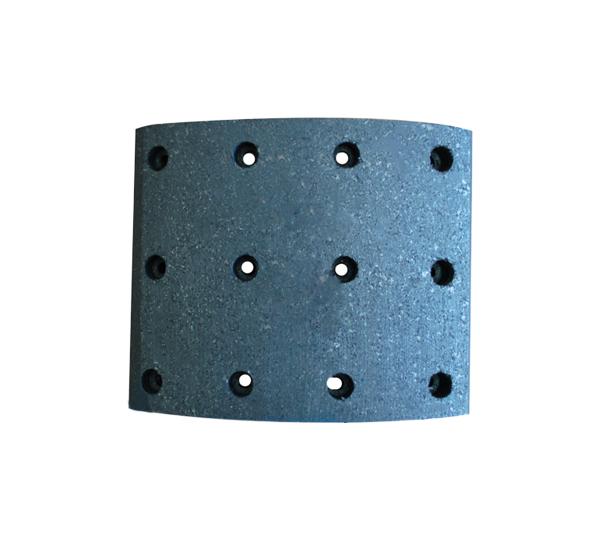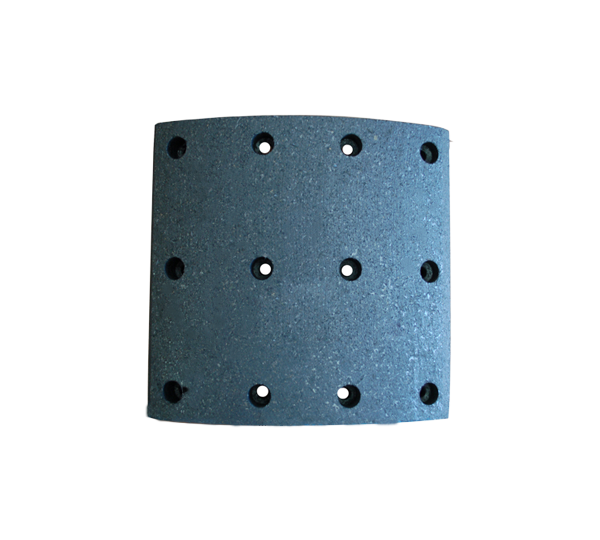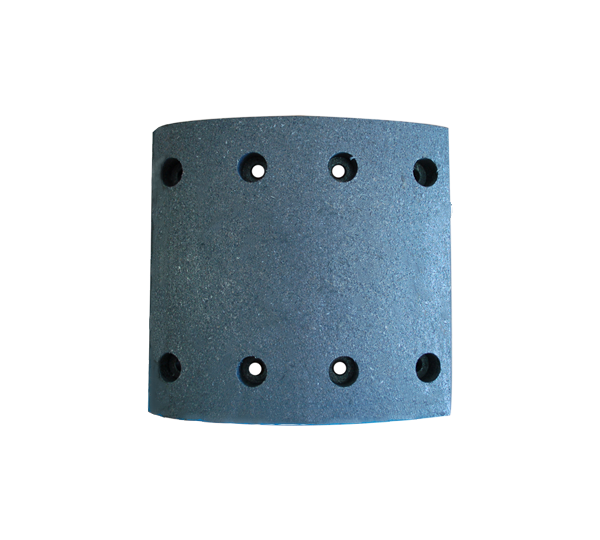In recent years, cars have become the most common means of transportation in people's lives. However, for the average working class, a car is still a relatively expensive item. Therefore, after buying a car, many families attach great importance to maintenance. When a certain distance or cycle is reached, they will come to the 4S shop for maintenance. Under normal circumstances, car owners only care about the safety configuration of the car, and sometimes ignore some small accessories, such as an inconspicuous brake pad.sino truck brake lining
There is no fixed cycle for the replacement of brake pads. Suppose you go to a 4S shop for maintenance, and the operator says that it is time to replace the brake pads this time without checking, which is extremely irresponsible. Only the oil and filter elements in the car have a fixed replacement cycle, and all other items must be checked to determine whether they need to be replaced. Today I want to talk about brake pad manufacturers. Most of them replace the distance between 30,000 and 80,000 kilometers, and the difference in kilometers is still very large. The more you step on the brakes, the sooner you change them, and the less you step on the brakes at high speeds, the later you change them. However, it is also related to the material of the brake pads. The brake pads of some models are replaced earlier, which is caused by the fact that the brake pads are too soft.
Assuming that the vehicle is not maintained by yourself, go to a 4S shop or a repair shop, then ask the technician to check the thickness of the brake pads every time you maintain it. If the prediction is not enough to proceed to the next maintenance, it should be replaced. Assuming that the car is maintained by yourself, how do you check it yourself? Also, look at the number of kilometers first. Assuming that the number of kilometers is very small, less than 30,000 kilometers, you can take a look at it yourself, and you can see the thickness of the brake pads by looking at it with a flashlight. Assuming that it is more than 30,000 kilometers, it is best to check it carefully. The way is to remove the tire and you will see it at a glance. There are two brake pads for each wheel, one outside and one inside. If you only look at it with a flashlight from the outside, you can only see the outside piece. Most cars have similar wear on the inside and outside of the brake pads, but some cars are quite different. Assuming that the inner piece is worn to the limit and the outside has not been worn to the limit, it is forbidden to just look at the outer piece at this moment.
After removing the tire, the inner and outer brake pads can be seen clearly and accurately, because assuming that there is not much experience, the thickness determination is not too accurate if you look obliquely from the outside. Generally, there are 3 mm left to replace. Assuming that there are 5 mm left after removal, it is best to take it apart and take a look at the next maintenance. Assuming that there is still 1 cm, it means that the brake pads are still very thick, so there is no need to disassemble it next time. There is an alarm pad on the brake pad. If it is worn to the limit, it will collide with the brake disc and make a sound. So if you forget to check the brake pad, and a sharp abnormal sound is made when you lightly step on the brake, you should pay special attention to it. It may be that the brake pad is thin. .

Most car brake pad manufacturers wear the front wheel quickly and the rear wheel slowly. The front wheel is replaced twice and the rear wheel is replaced once. Because the center of gravity of the vehicle moves forward when braking, the braking force is concentrated on the front wheel, so it varies according to the number of kilometers. , to look at the front wheels first. Of course, there are very few rear-wheel-drive vehicles that show proper front and rear wheel wear and even fast rear wheels.

Most car brake pad manufacturers wear the front wheel quickly and the rear wheel slowly. The front wheel is replaced twice and the rear wheel is replaced once. Because the center of gravity of the vehicle moves forward when braking, the braking force is concentrated on the front wheel, so it varies according to the number of kilometers. , to look at the front wheels first. Of course, there are very few rear-wheel-drive vehicles that show proper front and rear wheel wear and even fast rear wheels.
Assuming that it is to be replaced by yourself, it is best to buy brand parts from large manufacturers with good quality, and do not buy parts from inferior manufacturers. The price of auxiliary factory parts is cheap, and the cost is certainly low, and the quality will be poor. Poor-quality brake pads have poor high temperature resistance. When the brakes are stepped on downhill frequently, the performance will be greatly reduced if the temperature is slightly higher, the conflict force will become smaller, and the braking force will decrease. The brake pads of poorer quality will also crack or even break, which affects the driving safety. After replacing the brake pads, remember to step on the brakes with both feet, and then drive after the brakes are hard, otherwise it is very dangerous to have no brakes on the front two feet.
Most of the raw materials of brake discs are cast iron raw materials. When encountering wet and rainy weather, coupled with long-term wind and sun exposure, if the vehicle is parked for a long time, some rust will be formed on its surface, and these rust may be more or less. It will affect the normal operation of the brake system, so we must remove the rust on the brake disc. What is the effect of rusting brake pads?
1. Assuming that there is only slight rust on the surface, you can use the method of continuous braking to remove it while traveling. When traveling, lightly step on the brakes and let the conflicting force between the brake pads and the brake disc "polish" the surface.
2. If the rust condition is serious, it will cause uneven appearance of the brake disc. At this moment, it will be difficult to remove the rust, and even if it is barely "polished", abnormal wear of the brake pads will occur afterwards, and there will still be vibrations. It is best to drive the vehicle into the repair shop, remove the brake disc, clean the rust with sandpaper, check whether the appearance of the brake pad is abnormal, and conduct a road test after the installation is stable.
3. Drive at a speed of 70KM/H on a flat road, and brake several times to ensure that there is no abnormality. If there is still jitter, it means that the brake disc has an uneven surface and needs to be further polished and leveled or replaced depending on the situation.


 English
English 中文简体
中文简体









